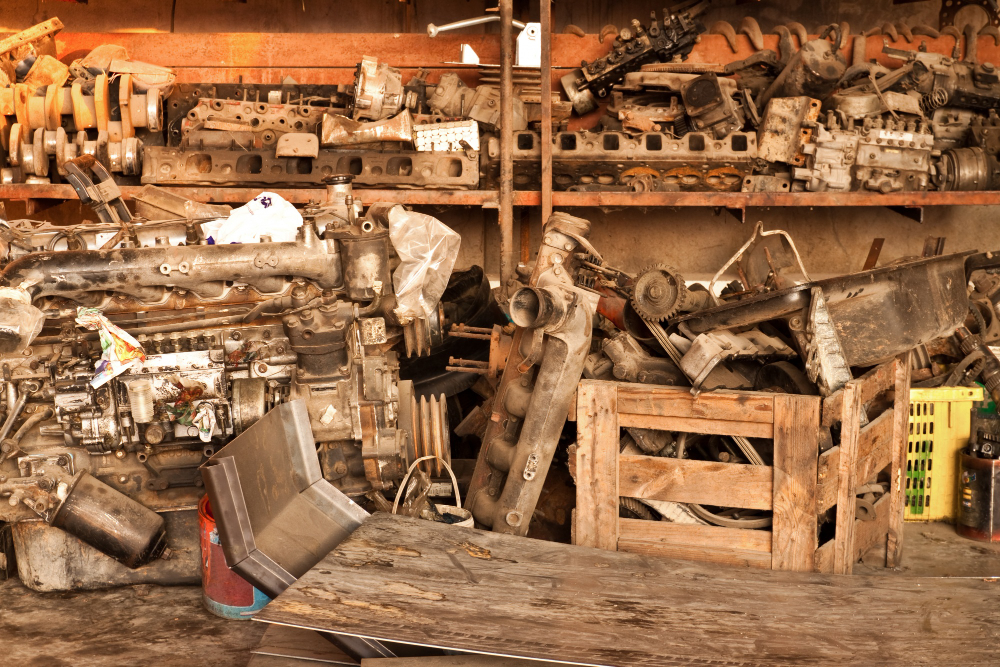Vehicle scrapping is the business of recycling scrap vehicle, which includes scrapping, dismantling, and recycling. It may also include the re-use of parts from a vehicle that has been scrapped. The value of scrap metals from cars and trucks has increased in recent years due to the growing demand for raw materials from developing countries.
Vehicle Scrapping In India
The vehicle recycling process involves the dismantling of the vehicle, separation of all the valuable parts and materials, and then crushing it into small pieces. The crushed pieces are then melted down to generate new metal parts and materials. These metals can be used in manufacturing other products like cars or even building houses or any other structure.
Vehicle recycling is a very important process as it helps to reduce pollution caused by old vehicles. There are many advantages of recycling old cars, trucks, and buses instead of junking them or dumping them somewhere in your backyard.
How to Start Authorized Vehicle Scrapping/Recycling Facility
The main advantage of scrap vehicle recycling is that it will help you save money when compared to buying new vehicles every time your old ones become unusable.
Another big advantage of vehicle recycling is that it helps to cut down on carbon dioxide emissions that cause global warming.
The following step-by-step guide has been developed to help you in starting an authorized vehicle recycling facility.
- Step 1: Obtain a license from the Ministry of Environment and Forests.
- Step 2: Register yourself with the Pollution Control Board (PCB) and obtain an authorization certificate from it.
- Step 3: After obtaining all necessary licenses, register your vehicle scrapping business with the relevant commercial tax office or any other similar office depending on the state where you are based.
- Step 4: Obtain a trade license if required by the state or district administration office. Once done, follow all other necessary procedures like opening a bank account and getting insurance for your business.
- Step 5: Buy or rent land and equipment like mobile crushers, tow trucks, crusher trucks, etc that are required for dismantling and recycling old vehicles in accordance with regulatory guidelines issued by the Ministry of Environment and Forests (MOEF).
Scrapping Schemes
In recent years, numerous nations throughout the world have launched accelerated vehicle replacement schemes, generally as part of a package of measures to stimulate economic recovery. These systems can be used to achieve a variety of outcomes, including:
- Scrapping of transport vehicles
- Automotive industry (includes dealers and other connected firms);
- Improving air quality;
- Reducing dependence on imported oil;
- CO2 emissions reduction;
- Improving road safety
Which vehicle qualifies for scrapping?
- The vehicle is no longer roadworthy
- The owner wishes to scrap it
- Vehicles without a certificate of fitness;
- Vehicles that have been damaged by fire, riot, natural disaster, accident, or any other misfortune and have been self-certified as junk by the owner;
- Vehicles that the state or central government has declared outdated, discarded, or beyond financial repair;
- Vehicles that have been auctioned, impounded, or abandoned.
Voluntary scrappage policy for automobiles
Voluntary scrappage policy for automobiles is a measure which allows the owner of an older vehicle to exchange it for a new one. This reduces carbon emissions and helps to improve the environment.
The purpose of the voluntary scrappage policy for automobiles is to encourage people to dispose of their old, polluting cars, in return for compensation from the government.
In addition to reducing carbon emissions, this also helps to reduce congestion on roads and increases road safety because old vehicles are more likely to break down or cause accidents than newer ones. The environmental benefits are increased further as older vehicles emit more harmful gases than newer ones.



